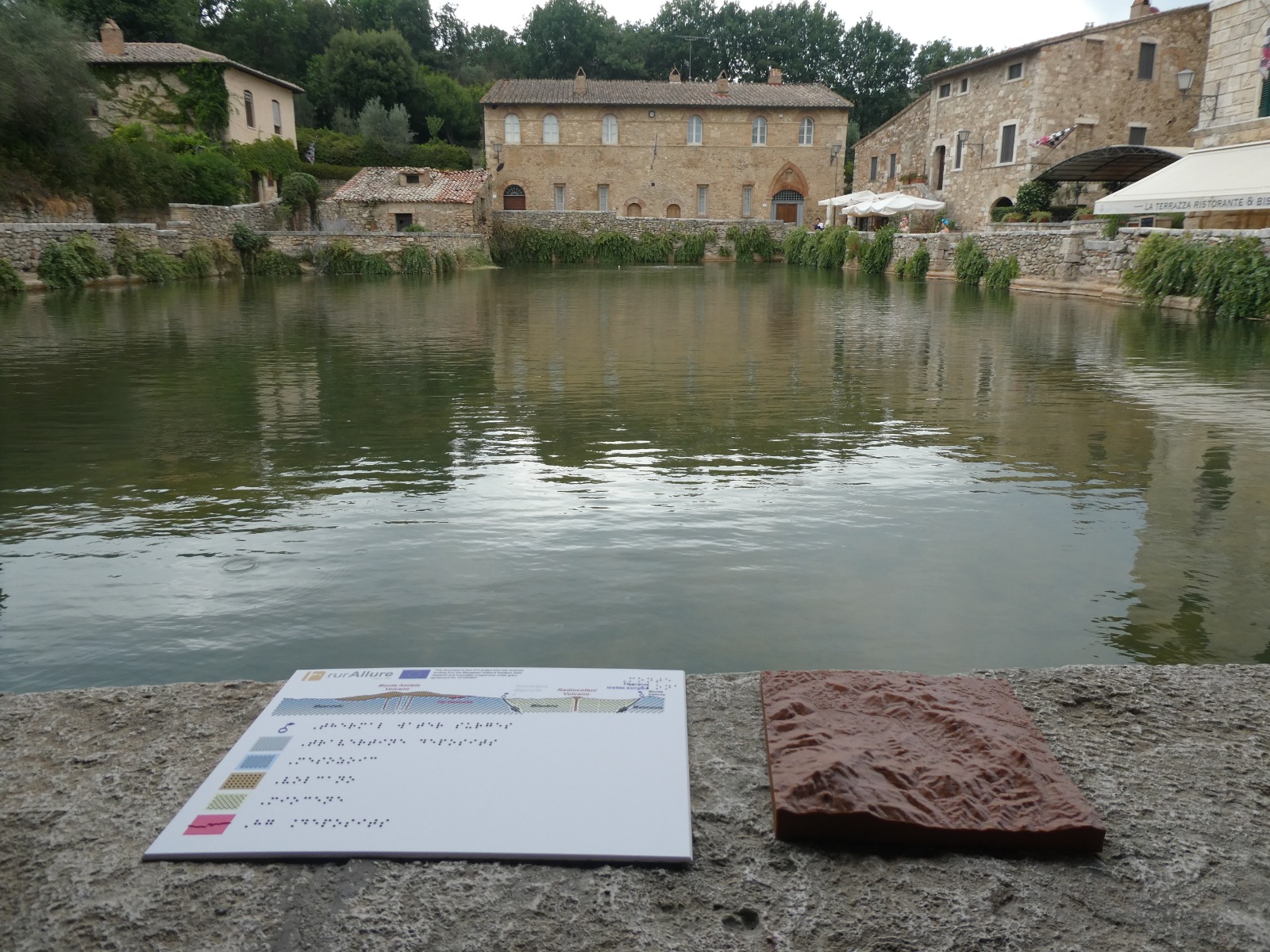On Saturday 9 July, our Association organised a workshop dedicated to blind people in Bagno Vignoni, in the heart of the Val D’Orcia in Tuscany, to bring those with visual impairments closer to the thermal heritage through a series of sensory experiences developed for the occasion by a team of experts from the Universidad Autónoma de Madrid.
The village of Bagno Vignoni, known for its 16th-century ‘water square’ in which 50-degree thermal water flows and for its rich thermal heritage, belongs to the ‘Thermal Via Francigena‘ project of which the municipality of San Quirico d’Orcia is an official member. The initiative was attended by Massimo Vita and Niccolò Zeppi, the presidents of the Siena and Florence sections respectively of the Italian Union of the Blind and Visually Impaired, together with Stella Funduleit, a member of the association in Siena.

Welcoming the group were Marco Bartoli and Virginia Pecci, respectively Deputy Mayor and Head of Tourism of the Municipality of San Quirico d’Orcia, who kicked off the proceedings: “We believe it is fundamental to try to understand the needs of every type of audience because this landscape belongs to everyone, no one excluded“, said Bartoli. “Thanks to the meeting, it was possible to lay the foundations for a very interesting and forward-looking project, which allowed us to look at Bagno Vignoni from another point of view, optimising efforts so that our heritage is within everyone’s reach“. Starting from this, we went through a brief excursus on the history of the village and its central pool, which through the centuries has found water as an element of crucial importance – as confirmed by the inscriptions dedicated to pagan and then Christian deities. Circumnavigating the square, the group was guided by the sound of the water flowing from the central pool into the canal, now partly covered, and then gushing into the Parco dei Mulini.
Supporting the walk were some relief maps and 3D models made by geologist Riccardo Rocca, allowing participants to understand the geographical conformation and geological composition, including elevation differences and Braille indications.

“It was not a guided tour, but a shared moment where the feedback of those present had a fundamental weight in creating an itinerary that is increasingly accessible to those with visual disabilities and to anyone who wants to walk“, explained Simona Spinola, communications manager of viefrancigene.org. The itinerant workshop, with which the participating group was very satisfied, at the same time providing indications for the development of the project and pointing out the need for improvements to the path in the countryside, concluded with a “sensory tasting” of some water collected at thermal sites along the Francigena and others that can be bought at the supermarket, in order to understand their properties and characteristics through smells and taste.

The Spanish team, composed of archaeologist Silvia González Soutelo, geographer Laura García Juan and geologist Miguel Gómez-Heras, emphasised that inclusive knowledge is one important way to achieve the Sustainable Development Goals: following the philosophy of ‘nothing done for us, without us’, people with disabilities are a fundamental part of the creation of inclusive dissemination content and not mere recipients.
The AllTrails app, partner of the Via Francigena, was also conceived with such inclusion in mind. It contributes to making the route practicable to all by providing pilgrims with information on the accessibility of the paths, the gradient, the type of surface, the presence of protective barriers and intersections with vehicle routes, also thanks to the contribution of its users who can share photos, reports and suggestions based on their own journey.
The initiative took place within the Horizon 2020 European project rurAllure, born to map out and disseminate rural heritage and sustainable tourism near major pilgrimage routes across Europe.









